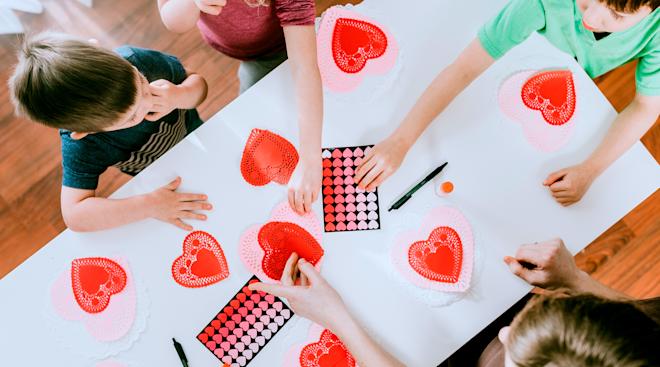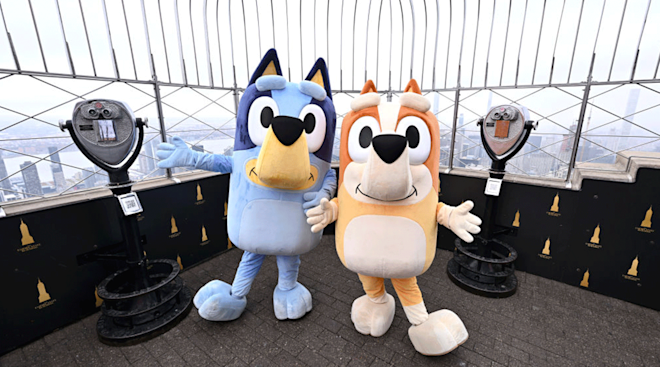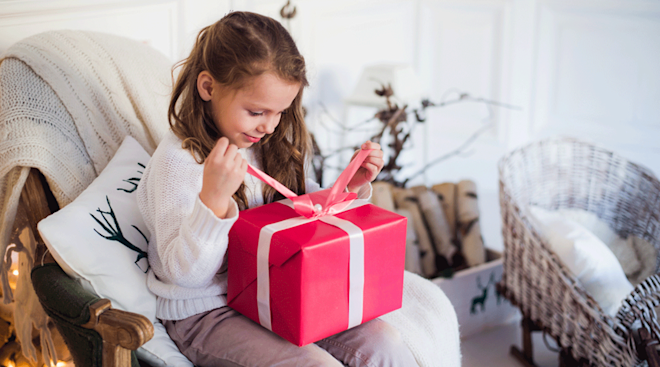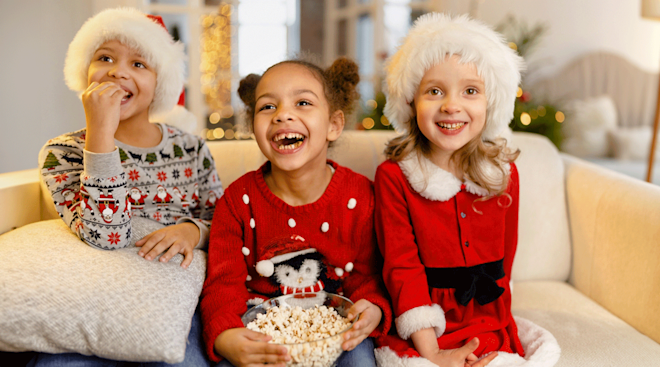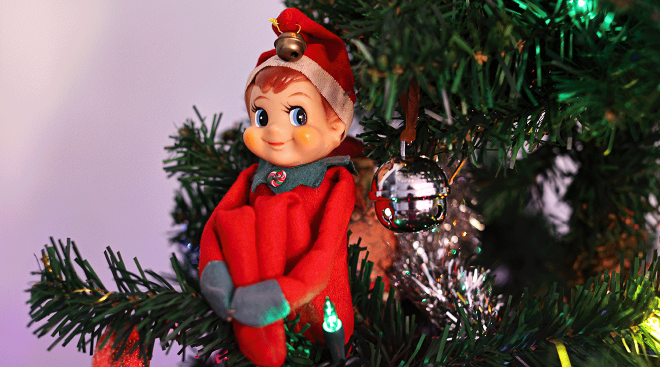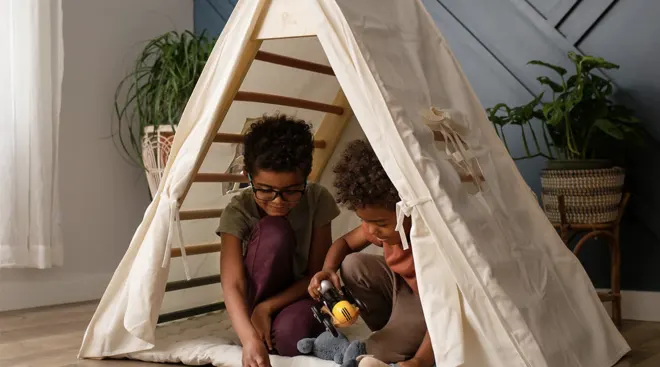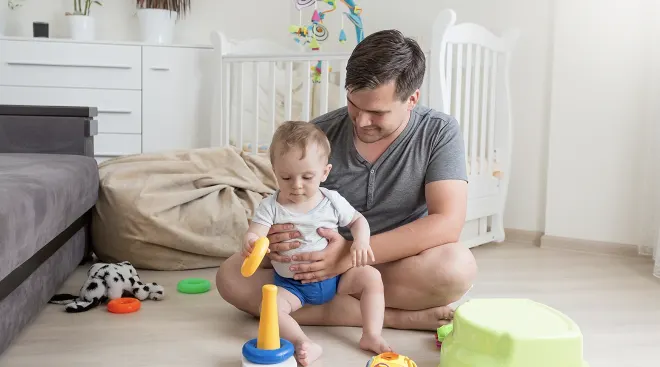What Is Associative Play and How Does It Benefit Kids?
As much as you love spending quality time with your kiddo, you might also be wondering when they’ll be ready to start playing with other kids (there’s only so much hide-and-seek you can take!). This big milestone is known as associative play—and it’s a big one for a child’s learning and development. But exactly what is associative play, when does it start and how can you encourage it? Read on for all the facts.
Associative play is the second to last stage in Parten’s six stages of play, a system that charts a child’s development from playing alone as a baby to playing interactively with peers in school. It’s the stage right before cooperative play, in which kids clearly interact and play together. “Associative play is often considered the bridge between playing independently and social play,” explains Maria Shaheen, PhD, senior director of early education at Primrose Schools.
During associative play, children begin to show interest in engaging with other kids during playtime. They may play with the same materials, occupy the same area, discuss their play scenarios or even mimic each other, but they don’t necessarily work together to achieve the same goals during play. “During associative play, children may observe, then engage in some play together and then do their own thing—there are no set rules around the play,” Shaheen says. “This lack of structured rules is one of the main differences between associative and cooperative play.”
Associative play examples
According to Shaheen and Gabrielle Felman, LCSW, an early childhood development specialist with Lovevery, some associative play examples include:
- Playing with blocks together but building separate structures
- Playing with the same toy cars and blocks set, but building their own roads with the blocks
- Playing with the same play kitchen set, but one child may feed a doll, while the other makes pasta
Both experts say that associative play typically starts around 3 years old, during the preschool years. However, Felman says that stages of play can shift to come sooner or later, depending on your child’s birth order and environment (i.e. daycare and early schooling). “All children develop at their own pace…The more exposure and practice a child has being around peers, the quicker you may see your child move toward associative play,” she says. “It’s often a noticeable switch when children become more interested in the children nearby than just the materials presented.”
Wondering if biological sex plays a role in how quickly little ones engage in associative play? “Some research does suggest that girls may initially engage in associative play at an earlier age than boys, yet boys engage in more associative play than girls during the older preschool years,” Shaheen says. That said, research on this topic is far from conclusive or definitive.
Until this point, kids have largely been focused on their own independent play. Associative play is the first time kids begin to engage with their peers. “A child’s world begins to expand during associative play, helping to lay the foundation for future social and communication skills,” Shaheen says. “It’s where children try out their budding social skills…and begin to learn social cues as they carefully watch how others play and attempt to enter play.” Along with social skills, associative play can also help build communication skills, as kids learn to share, interact with peers, solve problems and explore their surroundings, she adds.
Wondering how you can encourage associative play in your little one to help them build their social and communication skills? Below, Shaheen offers her top tips.
-
Provide play opportunities with other children: “Children will engage in associative play on their own if they’re given many opportunities to play with other children,” Shaheen says. One of the best things caregivers can do is set up playdates with different kids and settings, such as at the park, preschool or in the backyard.
-
Provide toys that allow for social play: Shaheen cites open-ended, sensory toys as great materials for encouraging social interaction. These could include sand tables, water tables, play kitchens, blocks, and dolls. “[They’re] all open-ended enough to allow children to share the materials and engage in play together,” she says. “These types of materials can be used throughout associative play and into cooperative play.”
Above all else, let your child move at their own, unique pace. Some children are naturally more social than others, and some may need more time to open up. Provide them with tons of varied play opportunities and trust they’ll “begin to engage in more associative play with other children as they’re ready,” Shaheen says. Of course, if you have any questions or concerns about your child’s social development, don’t hesitate to flag them with your pediatrician.
Plus, more from The Bump:
Gabrielle Felman, LCSW, is an early childhood development specialist and the director of childhood development for popular kids’ toy brand Lovevery. She earned her master of science degree in early childhood education from Bank Street College of Education, as well as her master of science degree in clinical and medical social work from Columbia University. She completed a clinical residency at New York Presbyterian Morgan Stanley Children’s Hospital.
Maria Shaheen, PhD, is the senior director of early education at Primrose Schools, and has over a decade of experience working as a teacher. She has a doctoral degree in curriculum and a master’s degree in elementary education, both from Kent State University, located in Ohio.
Learn how we ensure the accuracy of our content through our editorial and medical review process.
Navigate forward to interact with the calendar and select a date. Press the question mark key to get the keyboard shortcuts for changing dates.







































